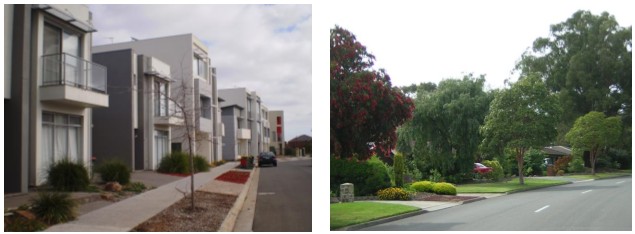Bloomberg has published an interesting article about how cities are facing swelter temperatures as climate change combines with the loss of green space to create a ‘heat-island’ effect:
It’s so hot in Phoenix that American Airlines Group Inc has had to cancel scores of flights… The sweltering conditions, which have engulfed much of western Europe too, are probably just a taste of what’s to come as greenhouse gas emissions create more drought and heatwaves.
Cities have most cause to sweat. Because of the so-called urban heat island effect, their temperatures tend to be several degrees higher than surrounding rural areas, particularly at night as buildings and roads trap heat.
About 80 percent of global GDP is generated in cities and more than half the world’s population live in one, which is expected to reach two-thirds by 2050.
We’re about to find out what happens when you cram billions of people into urban areas and crank up the heat.
Economically, the most immediate problem could be worker productivity. Employees are more irritable and distracted when hot… Plus, heat can kill, particularly if it’s humid…
For now, urbanization continues apace…
For now, populations (and property prices) are still swelling in places like Phoenix and Sydney, despite summers that feel like a furnace. But there are limits to human adaptability.
Previously I have lambasted The Australian Greens for supporting mass immigration while also lobbying strongly against urban sprawl in favour of in-fill development, which I argued was totally inconsistent with their policy goal of affordable housing.
This quote from The Greens’ Scott Ludlam encapsulates the party’s position:
The Australian Greens have called for better planning and transport infrastructure to help avoid urban sprawl as the nation’s population grows.
Greens public transport, housing and sustainable cities spokesperson, Senator for Western Australia Scott Ludlam, said authorities need to work together to plan sustainable cities.
“The National Institute of Labour Studies reported that Sydney and Melbourne will need more than 430,000ha of new land by 2050 on current migration levels – but this is also based on current building and planning practices,” said Senator Ludlam. “We need to develop more medium and high density energy-efficient housing in our cities, with improved public transport to reduce congestion and the need for parking space.”
“Better urban planning will reduce urban sprawl, protect valuable agricultural land, take the upwards pressure off housing prices and reduce the reliance on cars for transport.”
It’s hardly rocket science: the Greens’ infill utopia of jamming thousands more people into a given area will necessarily chew-up green space as backyards and open space are removed to make way for additional dwellings and infrastructure. And this will necessarily exacerbate the ‘heat island’ effect afflicting our cities, in turn raising energy use (think air conditioners).
Indeed, back in February 2014, a group of Melbourne and Monash University academics produced research arguing that the loss of vegetation from urban consolidation is causing heat-island effects, in turn raising temperatures and energy use:
Ever-growing houses, on ever-shrinking plots, mean that the average backyard has shrunk. Population growth has driven up property prices so that residential blocks are being subdivided for units or townhouses.
Meanwhile, larger green open spaces are being sold and developed…
Then in January 2015, Helen Brown – Lecturer in Health, Safety and Environment at Curtin University – published an article in The Conversation arguing that the lack of trees in new housing developments is significantly increasing the use of air conditioners and energy use:
The population of major Australian cities is expected to double in the next four to five decades. Planned increases in urban density are likely to result in the removal of a significant number of trees from urban areas.
Fewer trees in cities help create urban heat island effects – that’s when buildings and footpaths absorb the sun’s heat and then radiate it back out. Increases of up to three degrees are common and, in extreme cases, night-time increases of up to 12 degrees have been recorded.
And in March last year, Griffith University academics, Tony Matthews and Jason Byrne, posted an article in The Conversation urging Australia’s planners to develop urban greening strategies to overcome the “heat island effect” and cool Australia’s cities.
The fact of the matter is that The Greens’ position of supporting never-ending mass immigration and population growth, as well as increased urban density, is seeing backyards and green space disappear in order to accommodate new housing and infrastructure.
It is worth also noting that housing developments built in the 1950s, 1960s, 1970s, 1980s and 1990s (represented below on the right) typically have large blocks, ample green space, and lots of tree cover. In short, they are a desirable places to live and do not suffer from the “heat island effect”. Now compare these 20 to 60 year-old developments with the cluttered rubbish produced today (represented below on the left), which are proliferating:

Clearly, maintaining green infrastructure in our major cities is not consistent with the projected explosion of their respective populations along with planning rules that force increased population density.
Rather, squeezing an ever-growing population into an existing urban footprint necessarily means that trees, lawns and other green infrastructure will make way to buildings and roads, thus raising temperatures and energy use. At the same time it forces-up land costs, thereby making the building of affordable and energy efficient homes more difficult.
Herein lies yet another contradiction at the heart of The Australian Greens. The only way that The Greens can credibly argue against urban sprawl and environmental amenity is if they also strongly oppose mass immigration. Instead, they want to increase immigration even more and create an even bigger Australia!

